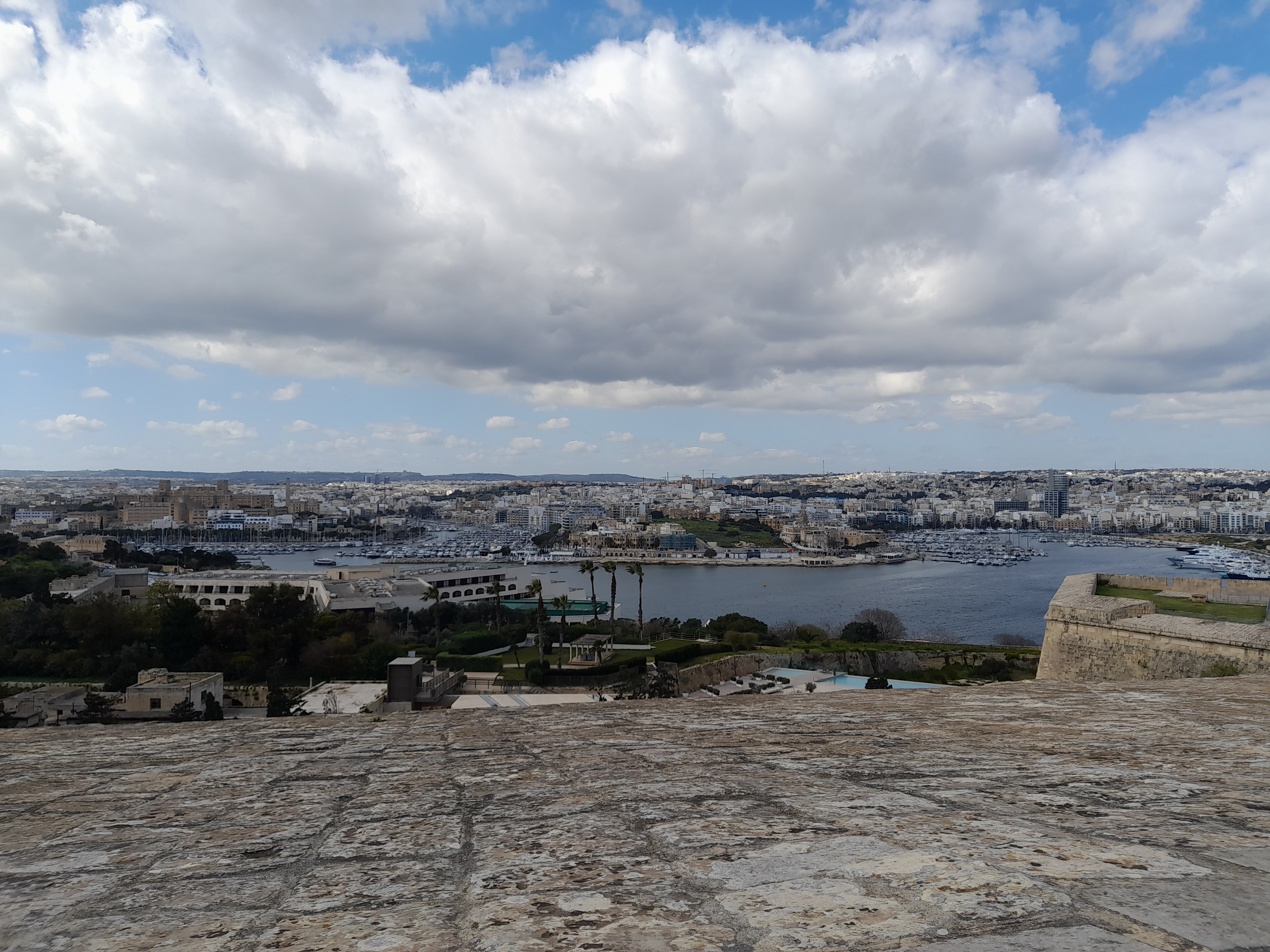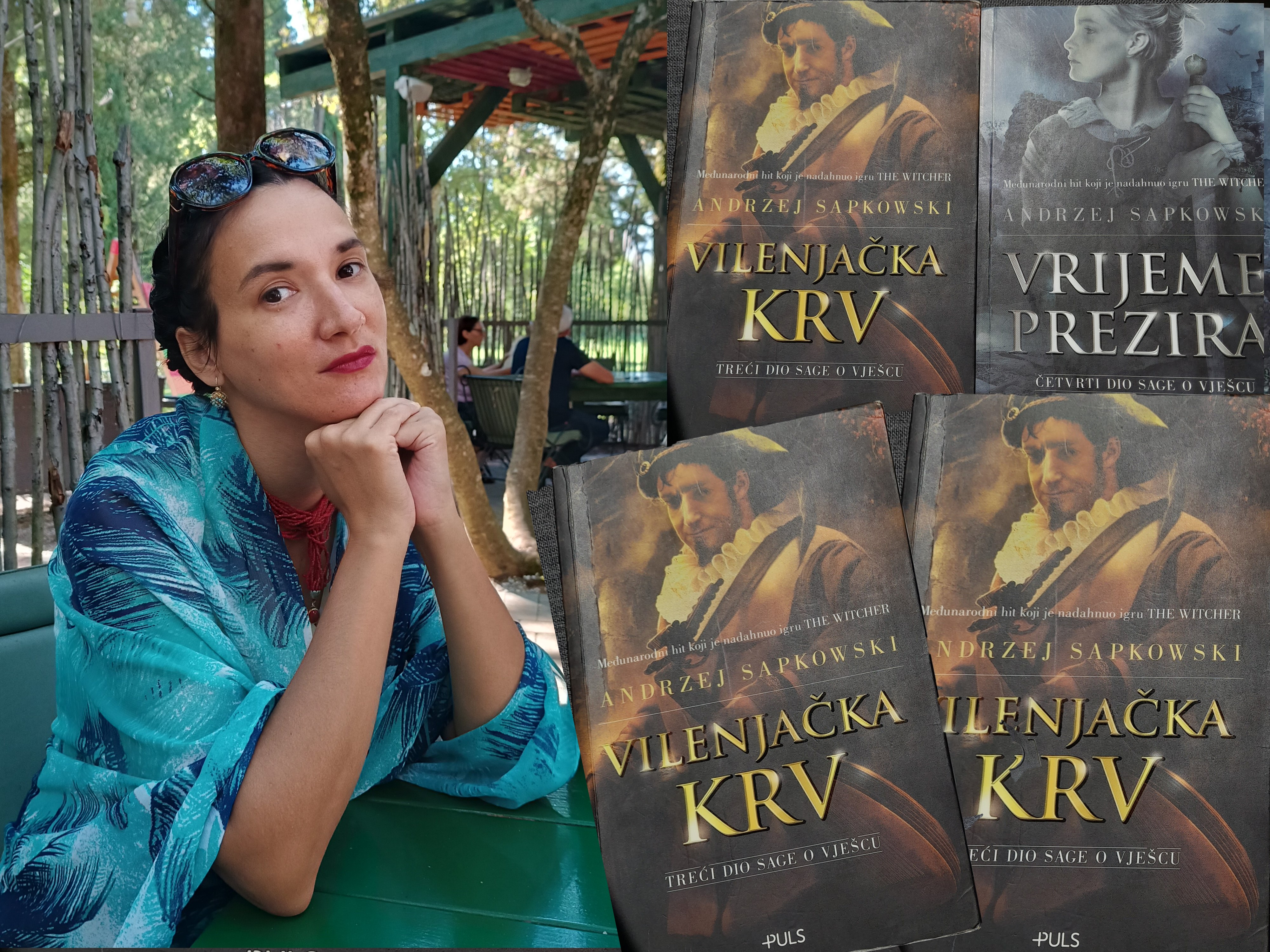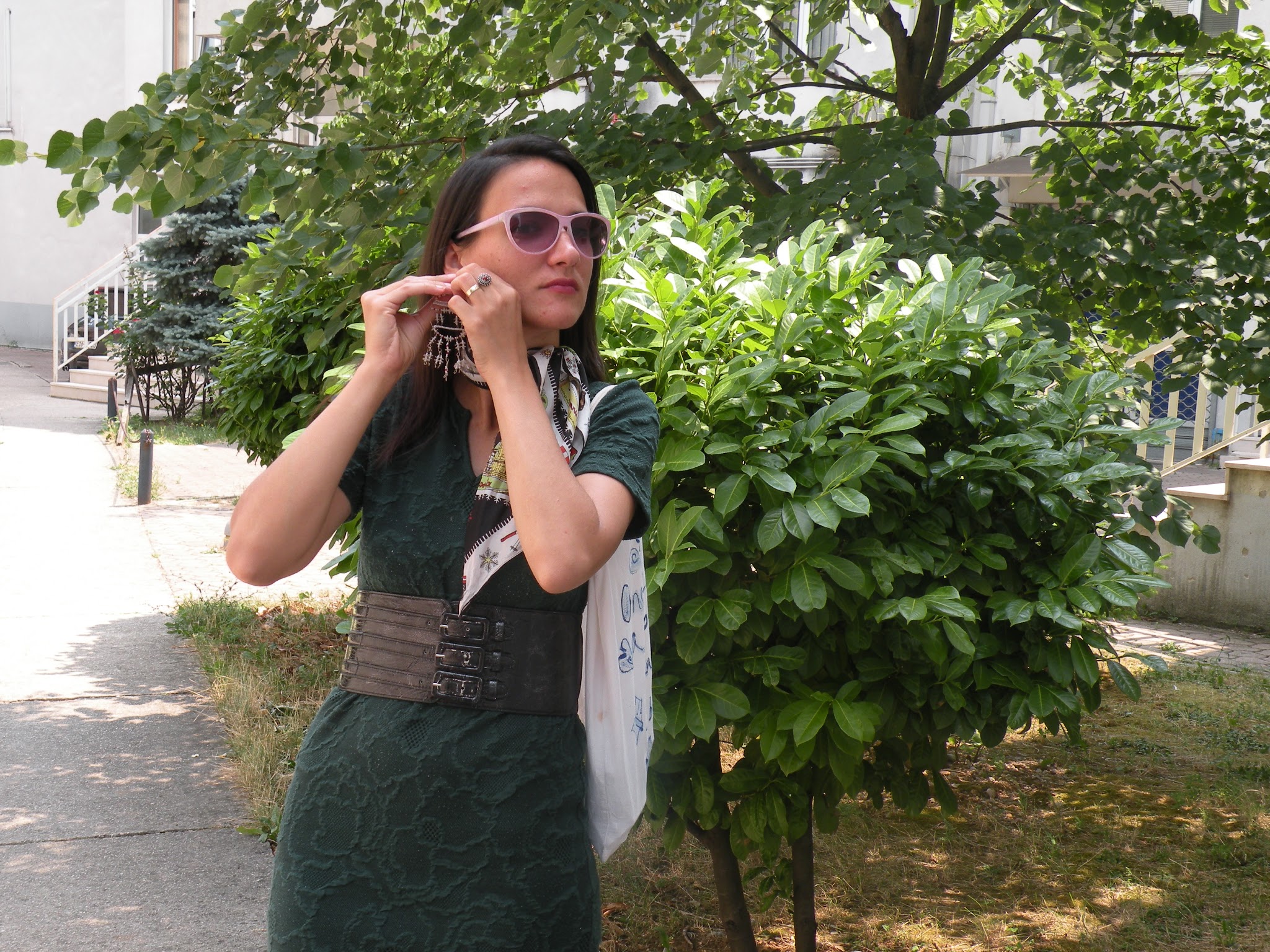VISIT MALTA WITH IVANA- HIKING TALES- VALLETTA
Hello! In this post, we shall explore, Valletta, a city of incredibly rich history. Besides it being the capital of Malta, Valletta is one of the most concentrated historical sites in the world. Simply a dream place for a historical lover like myself. Apart from being a historical landmark like no other, Valletta is simply amazingly beautiful.
VALLETTA! THE BEAUTY, THE STRENGHT AND THE HISTORY
During my stay in Malta, I visited Valetta a couple of times. My first visit was my friend Ivana, who was simply an ideal host. She was my guide and showed me a around. We've had such an amazing time strolling Valletta together. My other visits to Valletta were by myself. I strolled around the city and marvelled at how beautiful it was. I remember having an espresso by myself in a small cafe. Everyone called me 'mademoiselle' for some reason. Maybe they thought I was French. I get asked if I'm French sometimes, I think it's just something that people say when they can't figure out where you're from. Anyway, I enjoyed those solitary visits too, but I think I enjoyed our shared visit a little more. Valletta is a city best explored with a friend! Today I'll showed you where the two of us have been.
LET'S EXPLORE VALLETTA TOGETHER!
WHAT TO SEE IN VALLETTA MALTA?
Look at that smile on my face? The sea, the skies, the views...everything was beyond perfect that day.
Simply said, Valetta took my breath away. I mean what is there not to love? The fortified walls surrounding the city are majestically gorgeous. The views from those walls even more so. To look down on the harbor is to be mesmerized.
cited from 12 Top-Rated Attractions & Things to Do in Valletta | PlanetWare
The picturesque Upper Barrakka Gardens encircle part of the city's old fortifications, built on Valletta's highest point. The peaceful tree-shaded gardens feature fountains, flowerbeds, rows of archways, and statues of prominent historical figures including Winston Churchill.
Multiple viewpoints around the gardens afford different outlooks. Walk around to discover awe-inspiring panoramas of the Grand Harbor. It's possible to see across to the towns of Vittoriosa, Cospicua, and Kalkara.
The level below the gardens is the Saluting Battery (a former bastion), which is lined with military cannons. This space is now used for outdoor weddings and ceremonial events.
A traditional Gun Salute ceremony takes place every day at noon on the Saluting Battery, performed by members of the Malta Heritage Society dressed in authentic British Artillery uniforms. This ceremony includes firing the cannons.
THE VALETTA GRAND HARBOUR
When we climbed the walls to see this harour, I was in awe. Well, it's certainly a sight to behold.
Valletta owes much of its military success to its strategic location on the Grand Harbor. This enormous port could dock its battleships and still keep invaders out by closing off the entrance. The entire harbor is surrounded by massive fortifications, bastions, and defensive towers. This formidable setting was the scene of the Great Siege of 1565, the most famous event in Malta's history. Led by Grandmaster Jean de Valette, the Knights heroically defeated the Ottoman Turk invaders. Today, the Grand Harbor allows entry of large commercial ships, ocean liners, and cruise ships. Shaped like a multi-pronged fork, the harbor branches off into smaller creeks with small yacht marinas and boat docks. The Valletta Grand Harbor provides enough docks for thousands of boats, making it one of the largest marinas in the world. The entire Grand Harbor area encompasses a semicircle of densely populated little towns, including Kalkara, Vittoriosa, Cospicua, Senglea, Paola, and Marsa.Just across from Valletta, the towns of Vittoriosa, Cospicua, and Senglea, known as the "Three Cities" were the original settlement of the Knights. These towns are filled with historical monuments, such as auberges of the Knights, beautiful Baroque churches, and important military forts. *
CITED FROM https://www.planetware.com/tourist-attractions-/valletta-m-m-vall.htm
THE TRITON FOUNTAIN
MOST LIKELY IT IS THE FIRST THING YOU'LL SEE WHEN YOU GET OUT OF THE BUS (OR TAXI)!
The Triton fountain is really big and impressive, but what really impressed me was- just about everything else around it. I mean the fountain is beautiful, but it's more the open space that makes her stand out. The space around is very spacious, and once you get to the entrance of the city, you cannot help but to me impressed. The historic defensive walls are massive.
Interestingly, Valletta was not always the capital of Malta. That title used to belong to M'dina. However, the Knights decided they needed to live somewhere new the harbor. I actually visited M'dina as well, but more about that visit some other time.
The entire city of Valletta is an UNESCO heritage site! I'll write more about that below. At the same time, Valletta is the smallest European capital. It might be the smallest, but it's full of life!
EXPLORING THE MAIN STREES- AND THE CHARMING SMALL ONES
Exploring Valletta on foot is really the only way to go. So many charming streets to discover. The main streets are a must see, obviously, but this is a city you want to get lost in and wonder about.
TO LEARN MORE OF VALETTA'S HISTORY, I STOPPED BY UNESCO SITE
City of Valletta
The capital of Malta is inextricably linked to the history of the military and charitable Order of St John of Jerusalem. It was ruled successively by the Phoenicians, Greeks, Carthaginians, Romans, Byzantines, Arabs and the Order of the Knights of St John. Valletta’s 320 monuments, all within an area of 55 ha, make it one of the most concentrated historic areas in the world.
Outstanding Universal Value
Brief synthesis
Malta’s capital Valletta is a fortified city located on a hilly peninsula between two of the finest natural harbours in the Mediterranean.
The Siege of Malta in 1565 captured the European imagination and mobilised the resources needed to create the new city of Valletta, founded soon after, in 1566.
The Knights of St John, aided by the most respected European military engineers of the 16th century, conceived and planned the city as a single, holistic creation of the late Renaissance, with a uniform grid plan within fortified and bastioned city walls.
Since its creation, the city has witnessed a number of rebuilding projects, yet those have not compromised the harmony between the dramatic topography and the Hippodamian grid.
The fabric of the city includes a compact ensemble of 320 monuments that encapsulate every aspect of the civil, religious, artistic and military functions of its illustrious founders.
These include the 16th century buildings relating to the founding of the Renaissance city, such as the cathedral of St John, the Palace of the Grand Master, the Auberge de Castile et Léon, the Auberge de Provence, the Auberge d’Italie, the Auberge d’Aragon and the Infirmary of the Order and the churches of Our Lady of Victory, St Catherine and il Gesù, as well as the improvements attributed to the military engineers and architects of the 18th century such as the Auberge de Bavière, the Church of the Shipwreck of St Paul, the Library and the Manoel Theatre.
Criterion (i): The city is pre-eminently an ideal creation of the late Renaissance with its uniform urban plan, inspired by neo-platonic principles, its fortified and bastioned walls modelled around the natural site and the voluntary implantation of great monuments in well-chosen locations.
Criterion (vi): The city is irrevocably affiliated with the history of the military and charitable Order of the Knights of St John of Jerusalem, which founded the city in 1566 and maintained it throughout two and a half centuries. Valletta is thus associated with the history of one of the greatest military and moral forces of modern Europe.
Integrity
The city is built on a narrow peninsula surrounded by water. As a result, the perimeter of the city has remained largely unchanged since the departure of the Knights of St John, unencumbered by more recent development. It is of sufficient size and includes all elements necessary to express its Outstanding Universal Value. In spite of some rebuilding projects during the 19th century and severe damage during World War II, a high proportion of the original monuments and the surrounding urban fabric has been preserved intact or carefully restored. The massing and materials used during these later interventions have blended homogenously with the earlier fabric, simultaneously respecting the original urban form. However, the Outstanding Universal Value of the property is vulnerable to impacts on its setting, form and fabric, deriving from the demands of a living city.
Authenticity
Despite the succession of eventful interludes that Valletta has witnessed since the departure of the Knights, resulting in frequent changes of use of many of the buildings they left behind, Valletta has remained the administrative and commercial epicentre of the island and is today Malta’s capital. The property essentially retains its skyline and form from the 16th century, reflecting the natural topography of the peninsula; however, this is vulnerable to development pressures resulting in the increase of building heights, which is not always consistent with the city’s historic profile. The original grid of the street plan has been respected and the most important public squares have been retained, although some key monuments were lost to 19th and 20th century re-development. Rebuilding and restoration necessitated by later war damage has respected the materials and proportions of the historic city. The property retains its authenticity in terms of form and design, materials, function, location and setting.
Protection and management requirements
Two laws governing heritage issues were enacted in the 1990s. The first was the Environment Protection Act (No V of 1991), the second The Environment and Planning Development Act (No 1 of 1992), which aims to regulate and establish modern planning procedures. The latter established critical principles of scheduling and grading of historic buildings, and introduced the concepts of urban conservation areas and protective zoning. Although these policies relate to the whole of Malta and Gozo, they have particular relevance to Valletta. The Grand Harbour Local Plan (realised by the Malta Environment and Planning Authority), in force since 2002, contains policies that specifically protect the World Heritage property.
The Cultural Heritage Act (No VI of 2002, am. 2005) paved the way for the formation of three entities, namely the Superintendence of Cultural Heritage, Heritage Malta and the Malta Centre for Restoration (which was merged with Heritage Malta in 2005). The Act also provides for the creation of Religious Cultural Heritage Commissions, which have the same powers and responsibilities as the Superintendent of Cultural Heritage. However, the latter has no jurisdiction over Church property. From 1995, the most significant buildings, monuments and features of Valletta were afforded statutory protection individually and collectively by means of a scheduling scheme. In addition, the Maltese Government has established a number of national entities to ensure that its aims of conservation and rehabilitation of Valletta are achieved.
Valletta is a living city. It is the nerve centre of the Maltese political, administrative and business sphere as well as a major tourist attraction. The day-to-day demands of a modern community exert heavy demands on the institutional bodies entrusted with safeguarding, conserving and enhancing national monuments which are in daily use. Equally heavy and persistent demands are made on the housing and business premises of the city. To sustain the Outstanding Universal Value of the property, a draft Management Plan for the city was prepared in 2012 and the consultation with stakeholders is ongoing. The adequate implementation of the Management Plan will require collaboration among key entities on large-scale developments within the walled city, as well as clear policies on height controls to protect the city’s skyline and streetscapes, on the extent of the control area for building heights and on view sheds outside the walled city.
* CITED FROM UNESCO https://whc.unesco.org/en/list/131/
These views are hard to beat!
TAKING A PHOTO BY A FAMOUS POSTMAN STATUE
My friend told me this is a spot I have to have my photo taken by. Apparently, it is a famous postman statue or something. It was fun doing something touristy!
Prehistory
Between around 5500 and 4500 years ago, the Maltese Islands were inhabited by an extraordinary society, one both intelligent and resourceful. The Islands witnessed a unique, megalithic, building phenomenon.
The lives and beliefs of these early Maltese Islanders are shrouded in mystery. But they left us an indication of their lifestyle and their level of sophistication through an impressive number of elaborate structures which are still standing today.
The temples in Ġgantija, Gozo, are considered the oldest, surviving, free-standing monuments in the world. They predate the Great Pyramid of Cheops in Egypt and Stonehenge in southern Britain by around 1000 years. The Ħal Saflieni Hypogeum in Paola – a labyrinth of passageways and chambers dug out of the rock – is an outstanding feat of prehistoric engineering. It is the only underground temple and burial place of its kind in the world.
Other temples, those of Ħaġar Qim, Mnajdra and Tarxien, as well as a dozen other sites seem to confirm the theory that Malta was a “Sacred Island” – a kind of centre of worship and mystic practices for prehistoric communities in the region.
This new people to inhabit the Islands after Neolithic man probably also came from south-eastern Sicily. We find their early rock-cut tombs at Ħaż-Żebbuġ and Xemxija, Malta; and at Xagħra, Gozo. The tombs were already in the three-lobed or trefoil shape developed later and more fully at the major temple sites. These catacombs were perhaps the forerunner of enormous underground complexes, such as that of the Hypogeum. Though this site and the smaller chambers at Xagħra remain the only significant ones discovered to date.
By the time of the construction of Ġgantija, these farmers had developed a new cultural system, in total isolation and without any foreign influence. Although these people kept in contact with their ancestoral home in Sicily and voyaged as far as other Italian islands, Pantelleria and Lipari, for trade, there is no evidence of any cultural exchange. Their temples and beliefs remain unique to the Maltese Islands.
The temple culture came to a mysterious end by around 2500 B.C. No one knows whether these people died out, were subjugated by invaders or simply left the Islands. They were replaced by peoples from various parts of the Mediterranean during the Bronze Age.
The history of Malta is a long and colourful one dating back to the dawn of civilisation.
The Maltese Islands went through a golden Neolithic period, the remains of which include the mysterious temples dedicated to the goddess of fertility. Later on, the Phoenicians, the Carthaginians, the Romans and the Byzantines, all left their traces on the Islands.
At around the year 750 B.C. the Phoenicians settled in Malta. This maritime power based on trade and commerce referred to the island as Maleth, which means “shelter”. The Phoenicians were highly civilized people who used the Maltese islands as a stop on their trade routes – a bit like the transhipment industry that has developed here centuries later.
The Carthaginian Period in Malta started at around the year 480 B.C. Carthage, was a city founded by the Phoenicians on the north coast of Africa located in what is today Tunisia. The Carthaginians ruled Malta more about two and a half centuries. During this time, the inhabitants mostly grew olives, carobs and also produced some textiles.
The Carthaginians had to relinquish these islands to the Romans who seized control of Malta at the second Punic War in 218 B.C.
In 60 A.D. St. Paul was shipwrecked on the island while on his way to Rome and brought Christianity to Malta.
The Arabs conquered the islands in 870 A.D. and left an important mark on the language of the Maltese. Until 1530 Malta was an extension of Sicily: The Normans, the Aragonese and other conquerors who ruled over Sicily also governed the Maltese Islands. It was Charles V who bequeathed Malta to the Sovereign Military Order of St. John of Jerusalem who ruled over Malta from 1530 to 1798. Following the Great Siege of 1565, the Knights took Malta through a new golden age, making it a key player in the cultural scene of 17th and 18th century Europe. The artistic and cultural lives of the Maltese Islands were injected with the presence of artists such as Caravaggio, Mattia Preti and Favray who were commissioned by the Knights to embellish churches, palaces and auberges.
In 1798, Napoleon Bonaparte took over Malta from the Knights on his way to Egypt. The French presence on the islands was short lived, as the English, who were requested by the Maltese to help them against the French, blockaded the islands in 1800.
British rule in Malta lasted until 1964 when Malta became independent. The Maltese adopted the British system of public administration, education and legislation.
Modern Malta became a Republic in 1974. The foreign military bases on the island closed down permanently in 1979. Malta joined the European Union in May 2004.
cited from VISIT MALTA!
THE GRANDMASTER'S PALACE
This is one of the sights that are supposedly a must see, although I only glanced at it from outside. I gathered some information for those who want to know more:
The Grandmaster's Palace reveals the architectural splendor of an important cultural monument. At the center of Palace Square, this Baroque palace was built in the 16th century as a residence for the Knights of Malta. The palace continues to host official state ceremonies today. Part of the building serves as the Office of the President of Malta and as the House of Representatives. The rest of the building is open to the public as a museum. You enter the building through an elegant garden courtyard, which leads upstairs to grandiose hallways with lavish 18th-century frescos. The enormous Palace State Rooms are richly decorated with gilded moldings and works of art. Highlights include a series of murals that illustrate a complete narration of the Great Siege of 1565.
The Hall of the Ambassadors, also known as the "Red Room," is adorned with portraits of the Grandmasters, who led the Knights to victory. One of the paintings depicts the dignified-looking Grandmaster Jean de Vallette, founder of the city of Valletta. The Palace Armoury displays Knights' armor and weapons (swords, bows, firearms, and cannons) dating from the 15th to the 18th century. This collection reveals that the Knights of Malta were not ordinary soldiers, they were aristocratic warriors equipped with the most elaborate armor and weapons that money could buy.
CHECK OUT MY OTHER VISITS TO MALTA

































Oh, what a lovely time with so much to see. A rich history too. Love that sweater you are wearing. Thanks so much for this journey. Love the amazing photos!
ReplyDeleteThank you. The sweater was borrowed from my friend...and the scarf too. I packed light. I was flying Ryan air, hahaha. I didn't want to pay any fines.
DeleteExciting location! Wonderful architecture and streets! So lovely and great photos of you! Such an awesome post! All the best to your travels!
ReplyDeleteThe architecture on Malta is amazing!!!
DeleteBoa tarde. Obrigado pela visita e comentário, sobre as 2000 postagens. Obrigado por dividir sua viagem conosco. Infelizmente, nunca saí do Brasil. Grande abraço carioca.
ReplyDeleteObrigada!
DeleteExploring Valletta with a friend sounds like an absolute delight! It's always special to experience such rich historical sites with someone who shares your passion and enthusiasm. From the stunning architecture to the charming cafes, it seems like every corner of Valletta holds a story waiting to be discovered. Thanks for sharing your adventures in this captivating city! Read my new blog post.
ReplyDeleteYes, it was wonderful!
DeleteA wonderful post. The sky over Valetta has its own blue.
ReplyDeleteEs un lugar mágico. Como me gustaría conocerlo. Te mando un beso.
ReplyDeletei adore your photos:)
ReplyDeleteI had no idea Valletta was such a stunning city! Thank you so much for the tour! xxx
ReplyDeleteFantastic and exciting post Ivana! Thanx
ReplyDeleteI really enjoyed this tour of Valetta, I'm glad this city exceeded your expectations. I also love places with a history to uncover, in the streets, the buildings, the statues. beautiful photos you've taken!
ReplyDelete